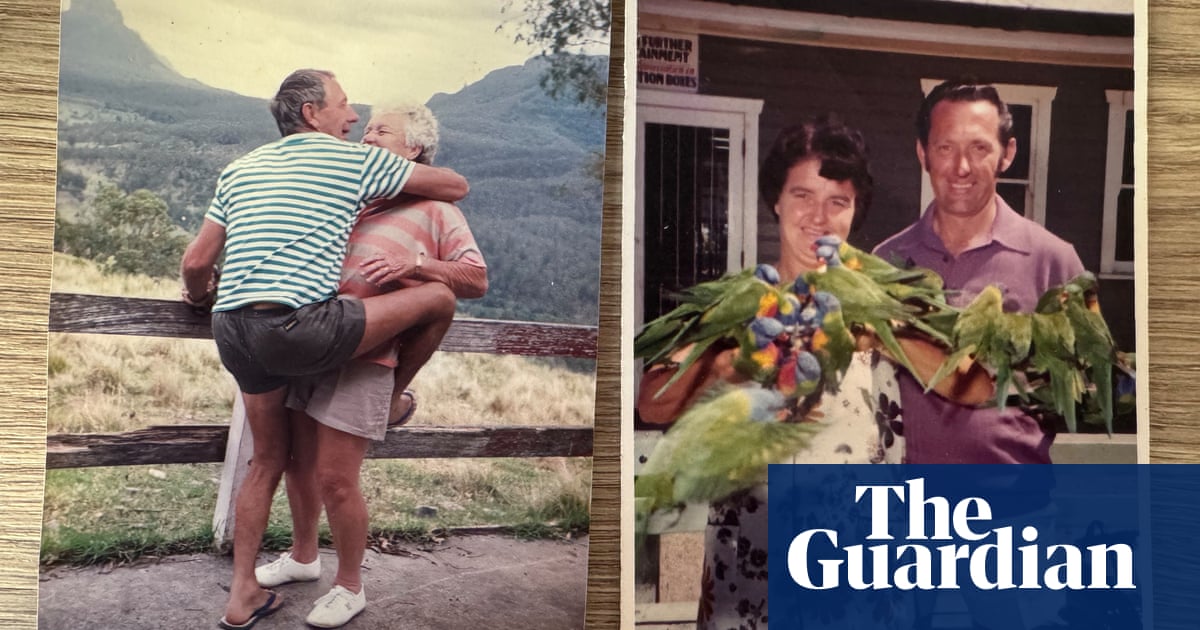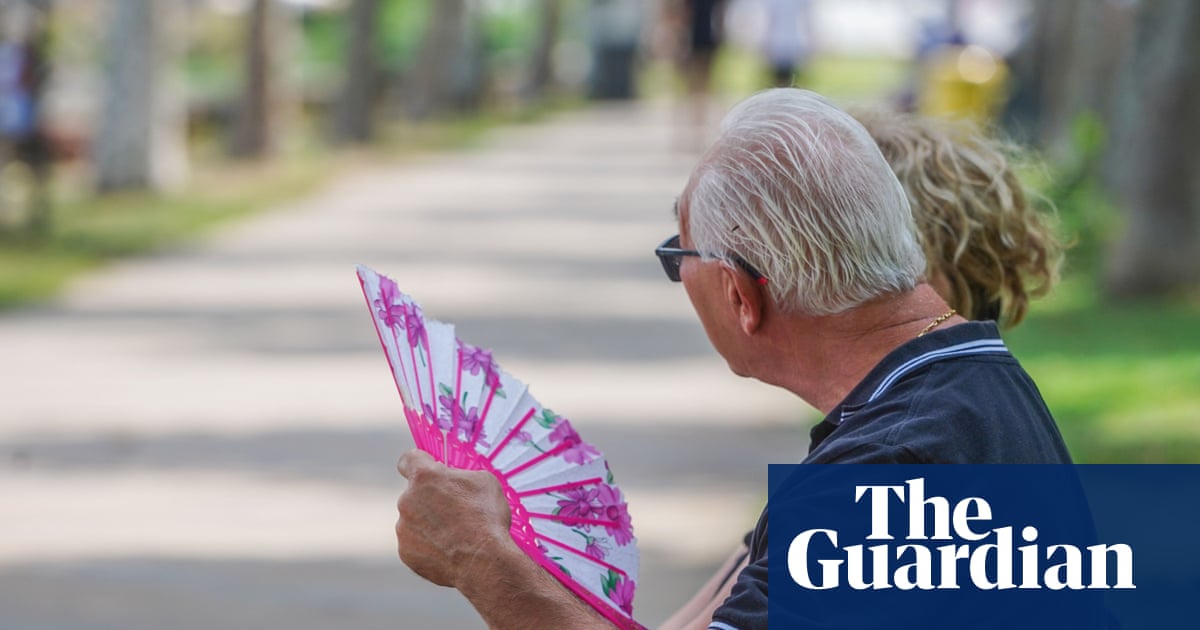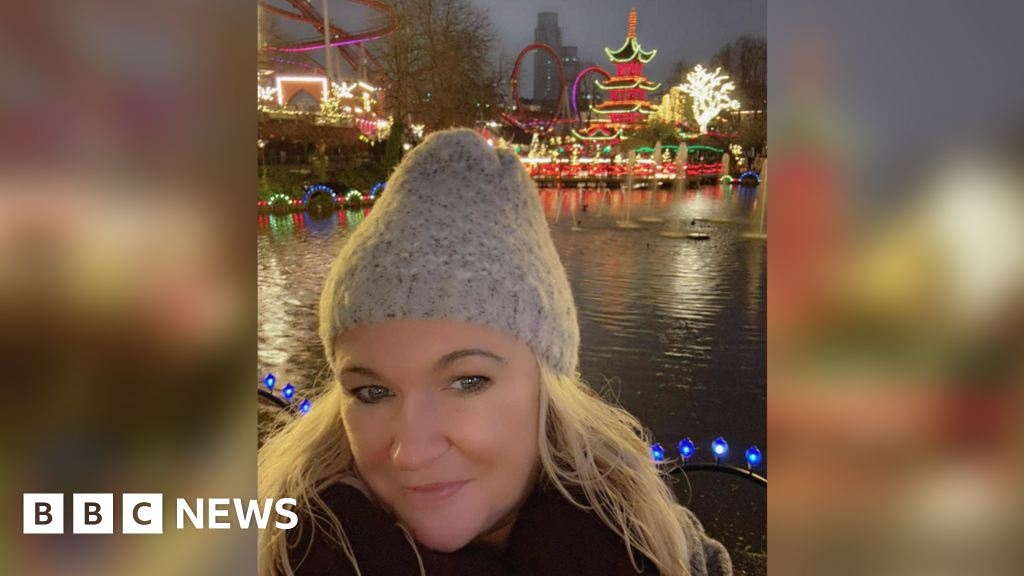A Love Story: Ron and Irene’s Final Wish Fulfilled Together

In their final moments, Ron and Irene were nestled together in a single bed, soft smiles illuminating their faces in a serene farewell. Both wore special shirts chosen for this poignant occasion; Ron donned a whimsical cranky cockatoo print, while Irene wore a lovely white blouse adorned with floral patterns, the same one she had chosen for their 70th wedding anniversary celebration just a few months ago.
The only indication of the solemn event that was to unfold were the twin cannulas, one nestled in each of their intertwined hands, with long, thin tubes trailing behind the bed, out of sight. This was not just an ordinary goodbye; it was the culmination of a life lived in love, and the realization of their final wish: to depart this world peacefully, together.
Ronald and Irene's love story began in South Hurstville during the 1950s. Defying her father’s wishes, Irene married at the tender age of 19. As the youngest of seven siblings, she was expected to remain at home and care for her ailing mother. Ron, whose family had emigrated from London in the early 1930s, met Irene through mutual friends, and was instantly smitten. Their courtship was swift, yet their love stood the test of time, leading to the birth of four children in Sydney before they relocated to Port Macquarie in the 1960s.
My mother often reminisces about her idyllic childhood spent on the banks of the Hastings River, where days were filled with sandy feet, salty hair, and afternoons spent prying oysters from river rocks. As the years rolled by, my grandparents embraced adventure, traveling across Australia in a caravan, with extended stays in Perth, Katherine, and other whimsical locations. In the 1990s, they purchased a small hobby farm in Unumgar, located in the picturesque inland dairy country bordering Queensland and New South Wales. By this time, their family had grown to include five grandchildren, and they worked tirelessly to transform the property into a haven for children. Ultimately, they returned to Port Macquarie to enjoy their golden years surrounded by family.
I can’t pinpoint the exact moment my grandparents first shared their desire to end their lives together, but it felt like a truth I had always known. To my surprise, many others were aware of their wishes as well. In the lead-up to their decision to access voluntary assisted dying (VAD), we learned they had expressed this sentiment freely to many. Irene, ever the fierce matriarch, had nursed all her siblings through their final stages of life, witnessing firsthand the often painful end that awaits us all. It was over a decade ago that she passionately declared to me her desire to leave this world on her own terms.
As time passed, fate took its toll. First, Irene lost her sight to glaucoma, rendering her almost completely blind. Then, a debilitating degenerative spinal condition began to take hold, robbing her of the dexterity and feeling in her hands and feet as her spinal discs crumbled and nerves were gradually crushed, ultimately leading to paralysis. Yet, she remained resilient, choosing to hide her suffering from us, even playfully wrestling with my toddler when she was already 90.
In April, when her condition had deteriorated to the point where she could no longer eat due to dysphagia, Irene felt the time had come. “I’m done,” she stated resolutely. “I’ve done everything I wanted to. I am ready to go.”
New South Wales was the last Australian state to legalize voluntary assisted dying, a significant milestone that took effect in 2023. Each state has its own requirements for eligibility, with VAD remaining illegal in both the Northern Territory and the Australian Capital Territory. In NSW, one must make three requests (two verbal and one written), be assessed by two independent physicians, and be deemed to suffer from a terminal illness expected to result in death within six months. Within the first seven months of VAD's legalization, 1,141 individuals initiated requests, with 398 patients ultimately passing through the process.
The first assessment for Irene was tense and uncertain; it was unclear if her spinal condition would qualify as terminal. Ron, overwhelmed by both his own health issues and the weight of the situation, suffered a severe panic attack. Medical staff noted that he would likely qualify more easily than Irene, an observation that left the room momentarily speechless. Yet, amidst the anxiety, it was clear: Ron was adamant, he did not wish to live without his beloved Irene. Together, they were ready to write the final chapter of their love story that had lasted over seven decades.
The weeks that followed were filled with tension. They needed to navigate three stages of approval rapidly, with their primary physician carefully managing their medications to ensure comfort while avoiding any impairment to their mental faculties. In elderly patients, even something as simple as a fever could jeopardize their eligibility.
In a remarkable display of strength and joy, my grandparents embraced the process, establishing a daily happy hour from 4 PM onwards. Friends and family could drop by for a last glass of sparkling wine, and much to our delight, Irene found that dysphagia did not include the beloved Aussie bubbles.
This happy hour turned into a farewell tour, where laughter mingled with tears as they entertained nearly every visitor with their rendition of Willie Nelson’s “On the Road Again,” anticipating their final journey together. My aunt even made a late-night multi-leg journey from Western Australia to hold her parents' hands one last time.
Some family members struggled with the decision. Just months earlier, we had celebrated their 70th anniversary with balloons, a giant slab cake, and a volunteer strumming the guitar while my grandfather crooned “Too Young” by Nat King Cole into the microphone. Yet, despite the mix of emotions, Ron and Irene were unwavering in their resolve. They had taken full measure of their remarkable life together, accomplished everything they had set out to achieve, and now felt it was time to depart.
Once the NSW Voluntary Assisted Dying Board approved their request, arrangements were meticulously made. Final meals were chosen: honey king prawns for Ron and spring rolls for Irene, sourced from one of Port Macquarie’s favorite Chinese-Australian restaurants. I marvel at how my mother, their primary caregiver, managed to orchestrate such a monumental process while also bringing together all five of us grandchildren from across Australia. Even with approvals in hand, there were still hurdles remaining. Last-minute psychological evaluations loomed large, with anecdotal evidence suggesting that only half of VAD applicants actually follow through—official data from other states indicates that the completion rate is closer to 30-35%. What if one of them changed their mind at the last moment?
The night before the momentous day, we gathered at my parents’ home in Port Macquarie for one last meal together. The atmosphere was a blur of tears, laughter, and heartfelt reminiscing. I held my Nan’s soft, wrinkled hand as she reassured me that this was what they truly wanted. In a moment of nostalgia, I felt like a little girl again, comforted by my grandmother one last time.
In many ways, I believe I had already begun to grieve. Two weeks prior, I had brought my husband and our two boys to say farewell. My three-year-old climbed onto Pop’s lap, eager to share his plastic insect collection, leading to a delightful discussion about grasshoppers versus praying mantises. Irene, with her limited vision, searched for the one pinpoint she could see and fixed her gaze on my husband, instructing him to take care of me. In that moment, it was abundantly clear: they were resolute, unwavering in their decision. They would never reconsider, knowing that their choices were made in tandem.
The day of the event, as we affectionately called it, was set for 10:30 AM. We started gathering in their room from 9:30 AM. My father opened bottles of champagne, allowing us to share one last toast together. The kitchen staff brought in a trolley laden with finger sandwiches, caramel slices, and assorted teas and coffees. Willie Nelson filled the air with his melodies, creating a festive atmosphere that felt more like a celebration than a farewell.
Due to their choice of medical assistance, both Ron and Irene required four healthcare professionals in the room. The two attending doctors guided us through the process with immense patience, empathy, and care, gently informing us that it was time. Irene lay down beside Ron, and the cannulas were carefully inserted, the tubes winding away from sight so that the doctors could step back and allow us all to be by their sides as they embarked on this final journey.
Ron and Irene held hands tightly, and the music shifted to a soft rendition of “You Are My Sunshine.” I sat next to my Pop, holding his other hand, while my mother, brother, and cousins surrounded Nan. I whispered the first line of a cherished childhood story, and Ron smiled, taking over the narrative one last time.
In a moment of levity, Nan made a rather inappropriate joke, causing us to gasp, fearing it could be her last words. Yet, she chuckled, adding, “Here I go – love you all.” And just like that, it happened—calmly, swiftly, and with dignity. In that room filled with love and smiles, they departed without any pain.
We had been reassured that hearing is the last sense to fade, so we repeated, “I love you, I love you, I love you,” until we were certain they had finally slipped away into eternal rest.




























